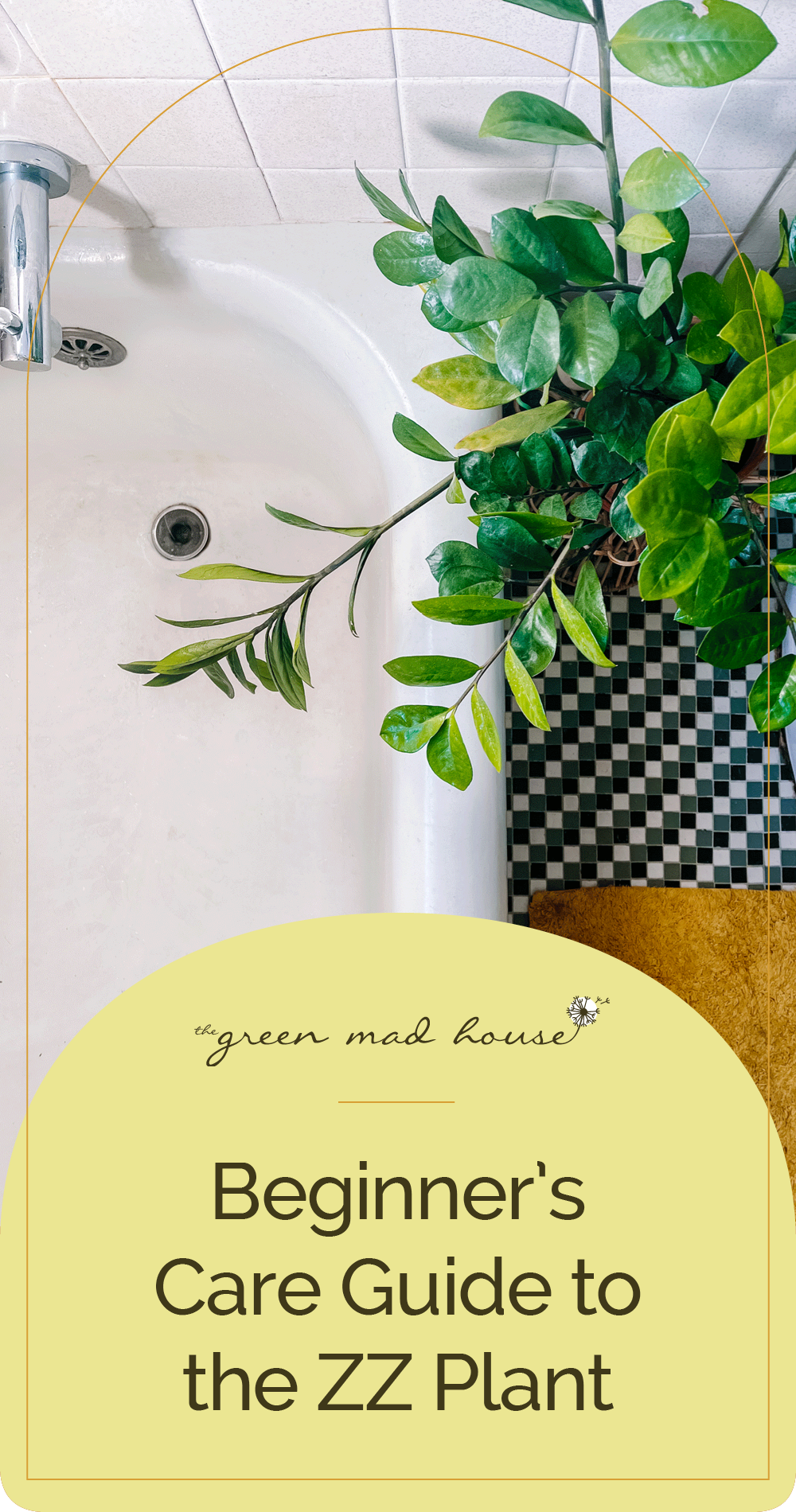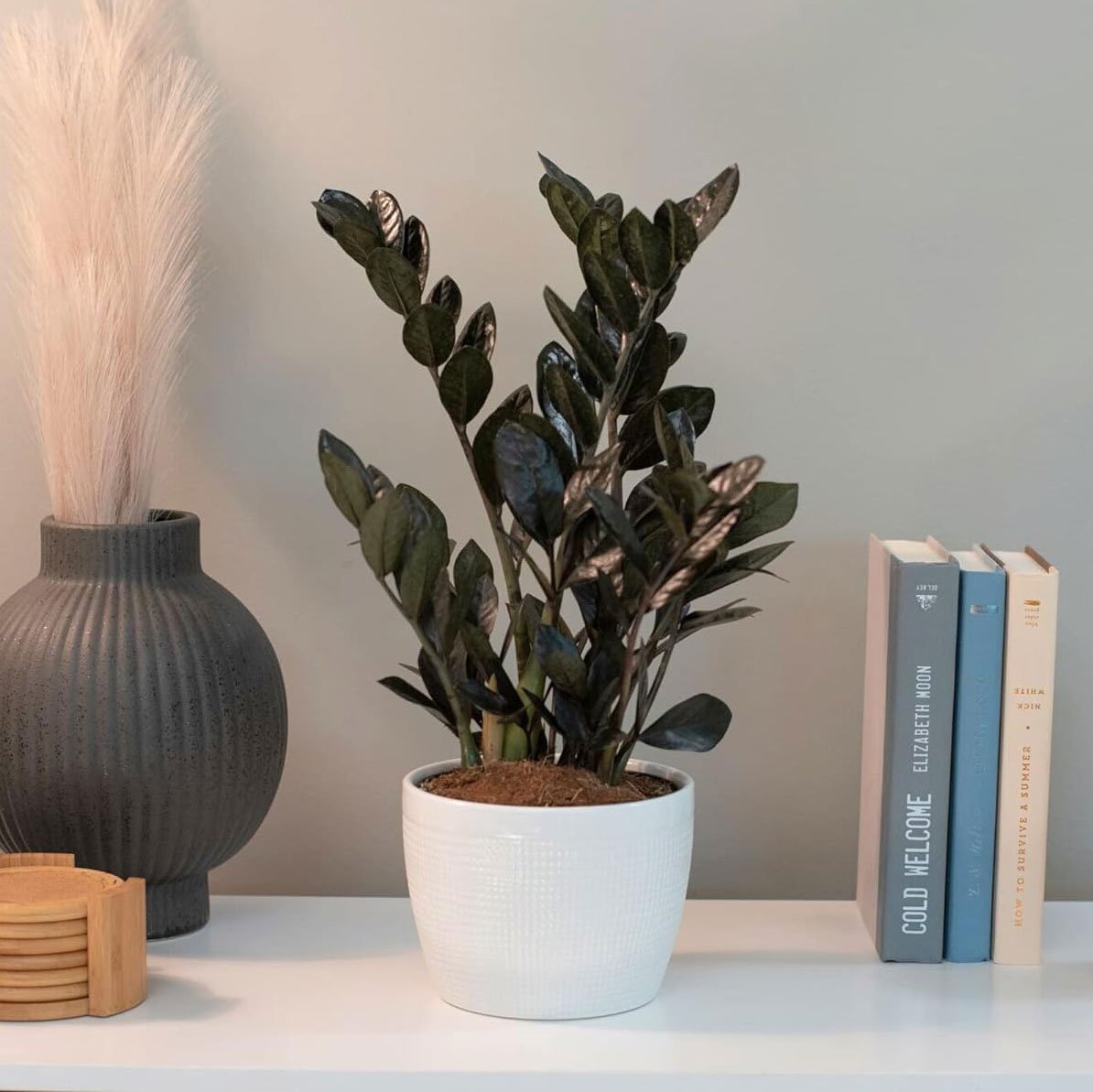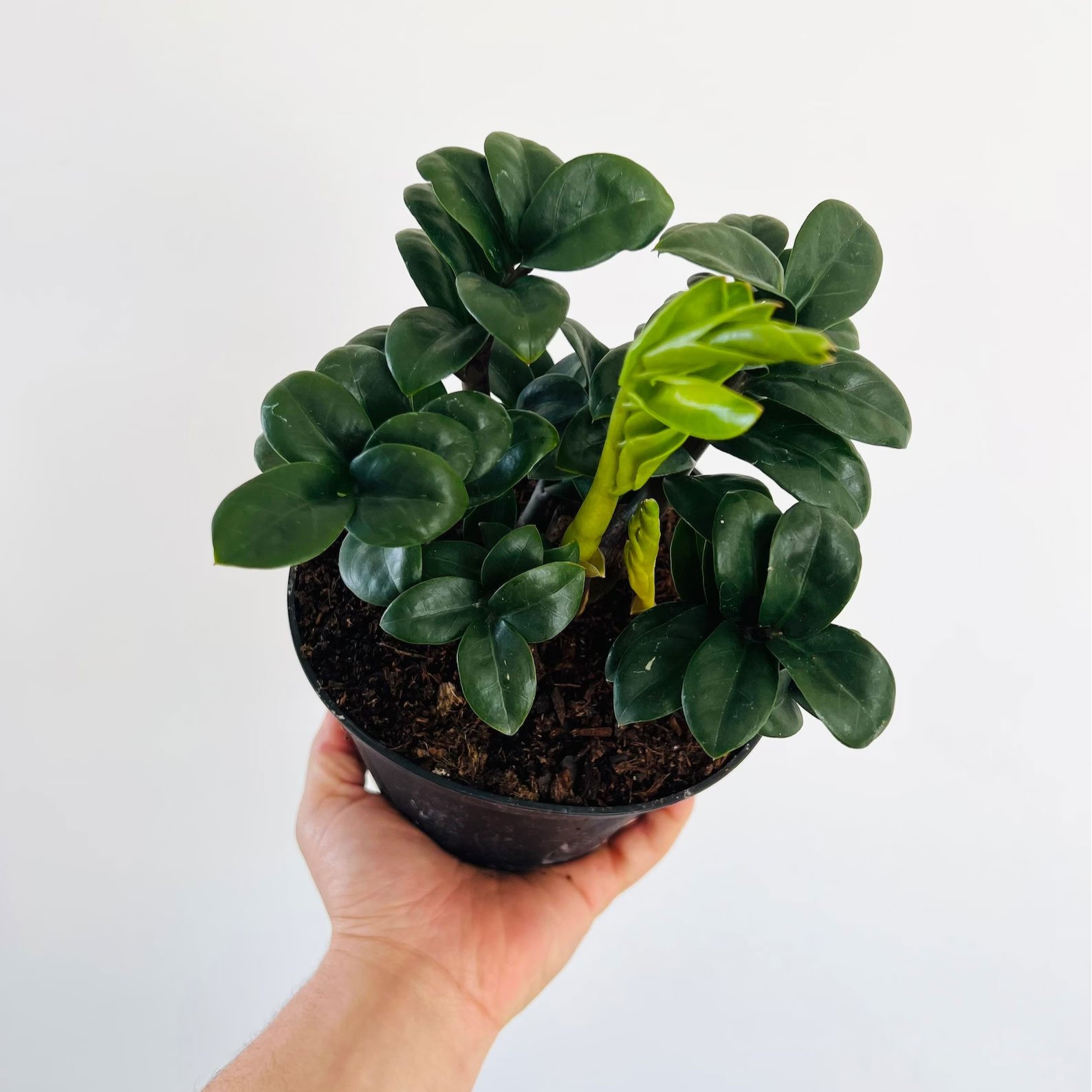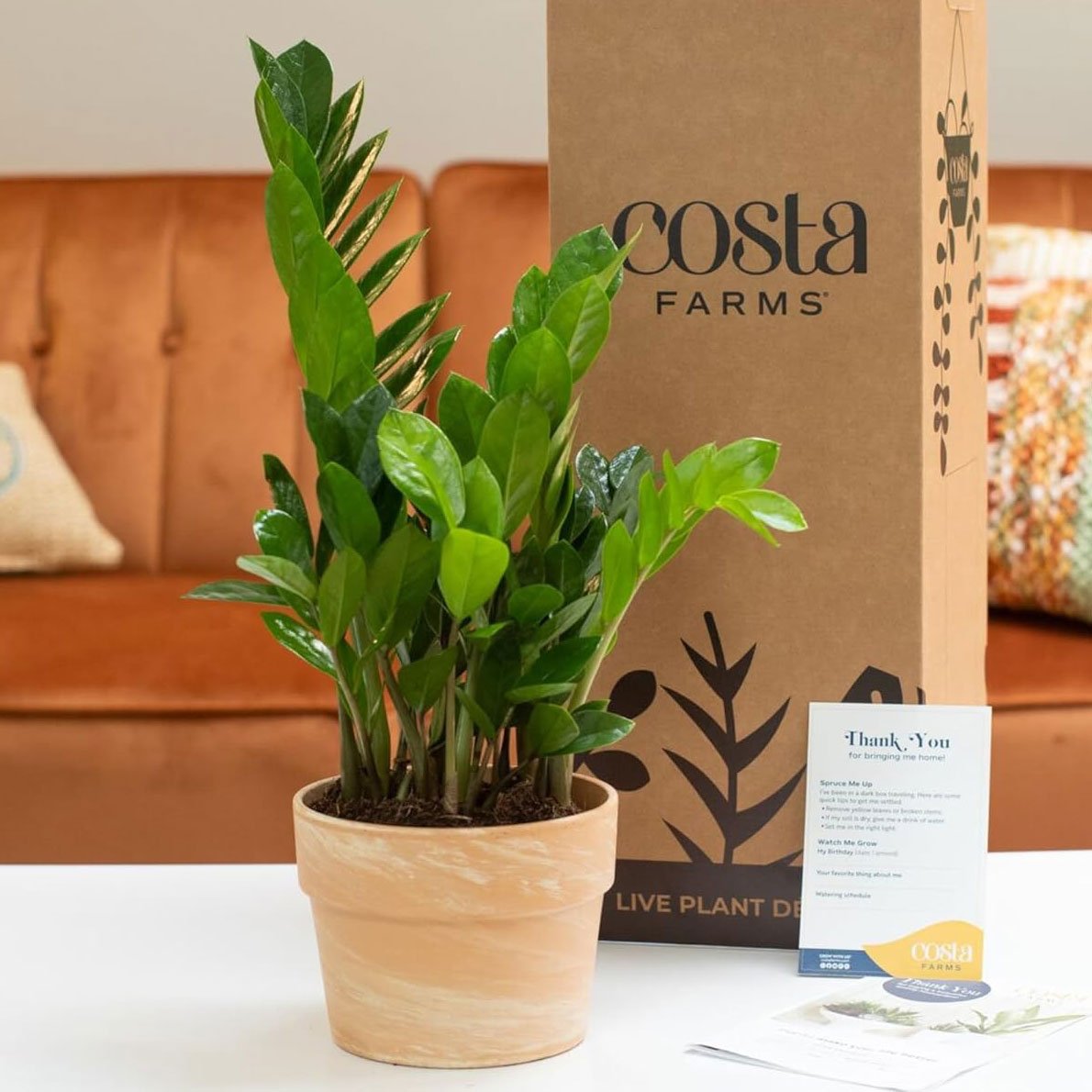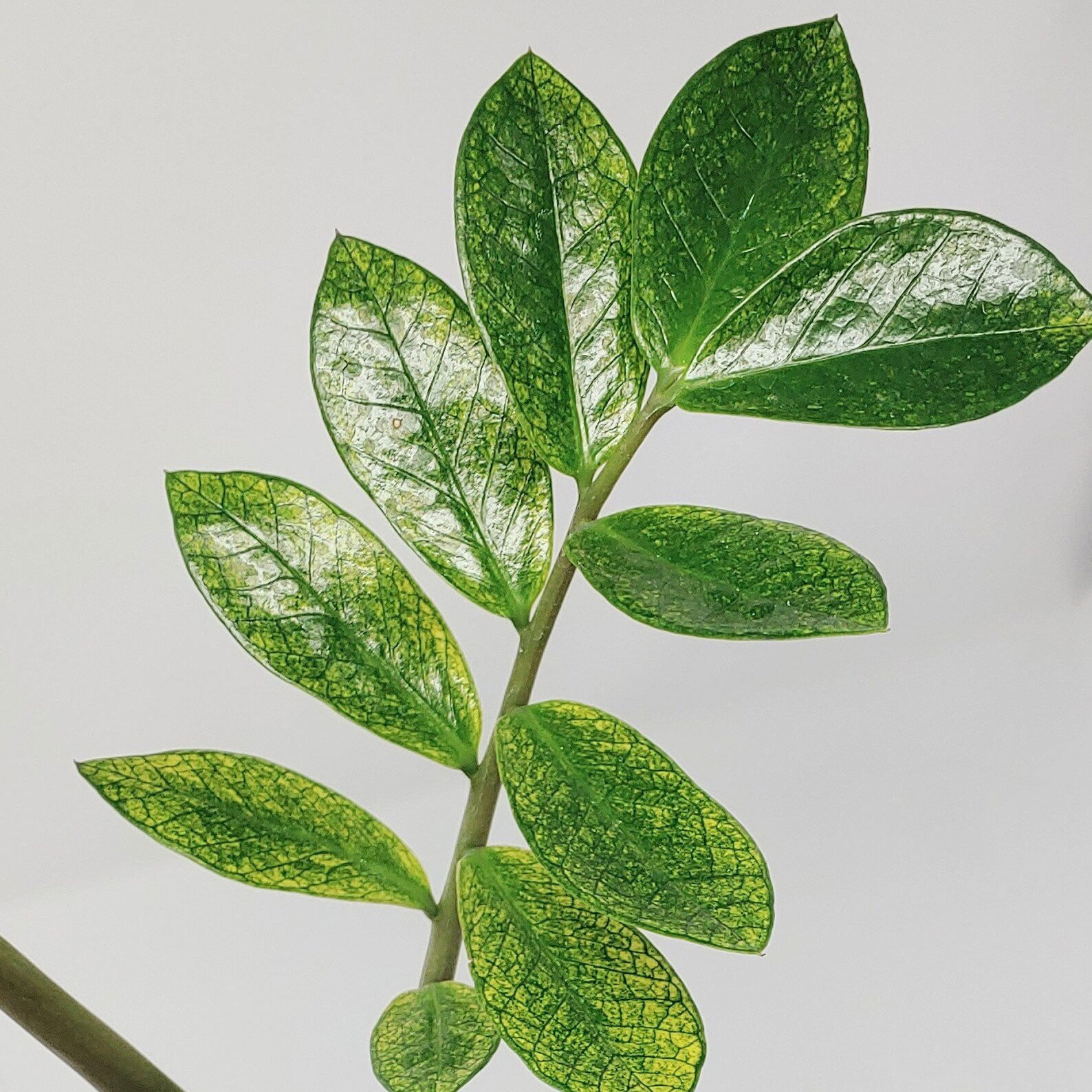Care Guide for the ZZ Plant
As an Amazon and Etsy Associate I earn from qualifying purchases.
About the ZZ Plant
The ZZ (Zamioculcas zamiifolia), or Zanzibar Gem, is a low-maintenance, hard-to-kill houseplant characterized by its shiny, oval-shaped leaves extending from long, thick stalks. A semi-succulent native to to Eastern Africa, it is accustomed to long periods of drought with occasional downpours of rain. As a result, the ZZ thrives on neglect. This, combined with its ability to live in very low light situations, make it very popular for businesses (look around the mall next time you are out) and offices (it will be fine while you are on vacation). While it can reach heights of 5’, it generally tops out around 2’-3’. To survive droughts, ZZ’s have developed a rhizomous root system (they look similar to a tulip bulb with tiny roots coming out) which stores large amounts of water. As an added bonus, ZZ’s have been declared to be one of the best air purifying house plants around! This makes it a great addition for your bedroom or office, two smaller spaces that you spend a lot of time in. All around, the ZZ plant is highly dependable, versatile and nearly fool proof plant that can grow in low light situations and has low water requirements.Varieties of ZZ Plant
Some people would be surprised to hear that ZZ Plants actually come in a few varieties:
- Common ZZ Plant - This is the kind you will see most places. Both in homes, business and plant stores, the common ZZ ranges from bright lime in their youth to an emerald green in their maturity. They can get quite tall, 2’-3’ and their oval shaped leaves range in size from 1”-3”.
- Raven ZZ Plant - If you were to know any variety, it would probably be this one. Growing in popularity over the last 2 years, Raven ZZ’s share all the same qualities as the common ZZ but feature near black leaves. Their new growth comes in bright lime but as it unfurls, deepens in color.
- ZZ Variegata - At this point I think the plant world has made a variegated version of everything so of course there is a ZZ. Featuring splashes of white, yellow and different greens, this ZZ may be slightly higher maintenance than the others. Often, to keep variegated coloring bright and contrasted, plants need a little more light than their non-variegated forms.
- Dwarf ZZ Plant - Also called ZZ Compacta. If you don’t have room for the height of the ZZ, opt for the dwarf variety. It features smaller leaves that are clustered tighter and that curl slightly. All care requirements will be the same!
How to Care for your ZZ Plant
SOIL: ZZ Plants like well draining soil with good aeration. A cactus/succulent soil from the store will do. You can also use a generic bag of houseplant soil and it will be just fine but I recommend mixing in some perilite and sand to up the drainage and air to the roots. You can use this formula:
- 2 parts all-purpose soil
- 1 part perilite
- 1 part sand
LIGHT: ZZ Plants can live in basically any light condition, even a bathroom that just has a little light leaking in from the hall. The only exception is direct light from hot afternoon sun. This will scorch your leaves. If this happens, move it to a shadier locale. You probbaly have spotted ZZ's at your corporate office, mall, or even hair salon. One of the reasons businesses love the ZZ is because it grows well under flourescents.
HUMIDITY: While the ZZ Plant grows natively in humid conditions, it does not require that in your home. If you live in an extremely dry climate, just mist it occassionaly or keep it in a bathroom or kitchen for increased humidity. I recommend this continuous mister, or a humidifier in the room.
WATER: Since these are semi-succulent, they can store large quantities of water in their rhysomes. This means they can go 2-3 weeks between waterings. In winter I cut back to watering every 3 weeks and in the growing season every 10 days. ZZ's can develop rot if overwatered so when in doubt, water less.
FERTILIZER: I recommend feeding your ZZ at the beginning of growing season and once again during summer. They don't need it often but it helps support their growth. Do not fertilize in winter.
TEMPERATURE: ZZ's are very standard and prefer a 65°F-85°F range (18°C-30°C).
Common Questions
PROPAGATION: ZZ's are so easy to propagate. It's even possible with one leaf. Sticking just the end in the water will illict roots. However, the easiest way to propagate is through division. You can divide the plant when repotting by gently seperating the rhizomes and repotting at the same depth. Rhizomes are slow growing so you want to avoid damaging any growth.
YELLOWING/DROPPING LEAVES: Dry, crispy leaves can be a sign of too much sun. If your plant is getting direct light, slide it to a shadier area. If your leaves are wrinkly or the plant is droopy, stick your finger in the soil, it is probably craving water. Yellowing, dropping leaves are a sign of overwatering. Eventually the rhizomes and stems will become mushy if it continues.
REPOTTING: ZZ Plants do not have to be repotted that often as their root systems are slow growing. If you do need to do it, aim for spring or early summer and do not increase the pot size by too much.
PESTS & DISEASES: These are generally pest free however Aphids can be attracted to the "sap" of the plants. You can find Aphids on the underside of leaves and will see yellow spots on the them. To correct this, wipe down the leaves with an insecticidal soap or, my favorite, neem oil.
PETS: The plants are mildly toxic to humans and animals. However my cats have never messed with mine in any way!
ZZ Plant’s are one of those house staples that I would recommend to any new plant parent or a seasoned collector. Their leaves almost look artificial they are so shiny and green. With their height they fill any corner full of color and life. Tag me on Instagram with your plants @thegreenmadhouse and let me know if you have any questions below.

